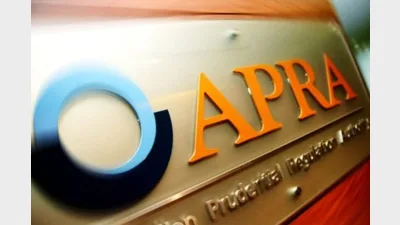(August-2001) Jurassic funds – public sector fossils come to life
If public sector funds continue their current pace of innovation there may be little point in writing an article such as this in years to come because the sector will be indiscernible from the rest of the industry.
The blurring of boundaries between these funds and their counterparts in the corporate and industry fund sectors is the result of a commitment to commercialism, which is being driven by that most powerful of forces - competition.
Over the years, public sector funds have built up a reputation as slow moving giants, taking out 11 of the top 20 positions in terms of asset size in Super Review’s survey of the top 300 super funds, but not necessarily considered to be in the front line when it comes to innovation.
But as State Governments free their public servants to choose from the glut of super options on the market, public sector funds around the country have responded to the competitive challenge with vigour. And, many have done so well that they now help define notions of what is leading edge in superannuation provision.
Rebadging exercises, highly sophisticated communications and investments, and in some cases desertion of public regulation for the open market and public offer status, are all signs of the increasing commercialism pervading the sector.
Despite a past reputation for dinosaur-like stodginess, or even ineptness, most public sector funds are well positioned to adopt a more commercial mindset, if performance is any guide to their effectiveness.
Research from Rainmaker Information reveals that for the five years to June 30, 2000, public sector funds credited members with an annual average return of 11.7 per cent. During the same period, retail balanced superannuation funds returned an average crediting rate of 10.3 per cent.
Rainmaker’s director of research, Alex Dunnin, points out that an annual performance differential of almost 1.5 per cent can be a lot of money over the longer term in a member’s retirement account.
Rainmaker’s figures are confirmed by Super Review’s research. The Top 300 published in our May issue revealed that in the 2000 financial year public sector funds credited an average 10.5 per cent return to members. This compared favourably with the 9.9 per cent credited by corporate funds and the 9.8 per cent by industry funds.
But arguing about which sector is better becomes irrelevant if the distinction between them is blurring.
“These funds are more concerned about what individual funds across the industry are doing rather than what pigeonhole they are put in,” says Dunnin.
“If you talk about the public sector to Australia Post, which is a pretty impressive sort of fund, they’ll say they are a corporate fund. If you look at Telstra, on one hand technically they are in the public sector, but for all intensive purposes they are a private company. So how do you classify them?”
Chief executive of the SAS Trustee Corporation, Lynn Gearing, confirms this sentiment when she describes NSW State Super as an industry fund for public sector employees. Gearing even goes so far as to occasionally compare State Super’s open accumulation scheme, First State Super, with other industry funds. The last time she looked it ranked second among all industry funds on the basis of asset size.
Gearing says competition has become particularly fierce for public sector schemes around the country because while their members can opt for other funds, the funds themselves cannot compete on the open market.
“Most public servants can choose their funds but we can only have public servants as members, so it’s a one-way bet for us,” Gearing says. “So we have to be at the leading edge in order to hold our position.”
For State Super, the leading edge includes a 10-year history of investment choice and a website where members can obtain a live account balance, 24 hours a day. The best most super funds offer is a balance for last week or last month.
State Super also closely tracks all exits from the fund with the use of comprehensive exit surveys.
“We don’t lose a lot of members,” Gearing says. “And, most people who leave our open scheme leave it because they are leaving the public service, not because they are going to a better fund.”
Even funds that are not exposed to such competition are continuing to innovate. Local Super SA-NT, previously known as the Local Government Superannuation Scheme of South Australia, re-branded in February last year and since then has continued to introduce a range of new services. This is despite the privilege of a captive membership, where all councils in the State are required to pay contributions into the scheme.
Local Super is a rare beast in that it has a defined benefit scheme that is still open to new members. But even in this traditionally archaic style of fund, recent changes have altered the benefit design to allow members to split their contributions between the defined benefit and accumulation components of the fund.
In addition to a new image, new member communications, and a comprehensive website, Local Super will be introducing member investment choice on October 1. “We think we are as good as anything out there,” Ryland says.
Mirroring the activity of public sector funds is the major public sector administrator, the SAC (Superannuation Administration Corporation). With State Super and First State Super for clients, the publicly owned SAC automatically qualifies as one of the country’s major administrators, and intends to capitalise on its expertise.
CEO Robert Frost says SAC will begin targeting corporate and industry funds in the latter part of this year.
“We have a very clear commercial imperative and our owner expects us to behave absolutely commercially. And the [public sector] funds have the same pressures as us,” Frost says.
He has no doubt there is now increasingly less difference between the public sector and the rest of the industry. “I doubt anyone could tell the difference between them nowadays,” he says.
A possible future?
As more public sector funds grapple with competition it would be understandable if many were to envy the Victorian experience, where funds like VicSuper and Health Super have left public regulation in favour of SIS and public offer status.
Since leaving the public sector on July 1, 1999, VicSuper has grown from $755 million in assets to $1.3 billion, and now caters to 1100 private sector employers.
But despite the public offer status, a dealers license and an advisory group that provides free advice to members (its record is 117 personal interviews in one week), an overwhelming 95 per cent of members still work in the public sector.
The fund describes itself as a multi-employer public offer fund, but as far as its membership is concerned it might as well still be public sector.
But in what may be instructive for people running public sector funds around the country, Welsh says the change in status delivered tremendous freedom from the cloistering experience of being a statutory authority, where every major decision had to be okay-ed by the Minister.
“Becoming a company under federal legislation gives you enormous freedom because the trust deed is controlled by the trustees, whereas in the public sector we had a piece of legislation controlled by the Parliament,” Welsh says. “To change legislation is a nightmare but to change a trust deed is one meeting.”
As a result, trustees are freed from political constraints and much more focused on servicing the member. The end result, he says, is that the member benefits.
Public Sector Fund Snapshot
Public sector funds by asset value
Top 10:
Fund Name Asset Value ($m)
NSW State Super - Pooled Funds 27000
State Superannuation Fund 7969
Qsuper 7082.5
Commonwealth Superannuation Scheme 5977
Public Sector Superannuation Scheme 4176.1
First State Super 3496
Emergency Services Superannuation Scheme 3400
Qsuper 2892.5
State Pension Scheme 2340
Government Employees Superannuation Fund 2130.4
Average Value of Assets ($m):
2664.421
The top 5 account for:
70% of total public sector assets
The top 10 account for:
89.1% of total public sector assets
Public sector funds by no. of members
Top 10 (active members):
Fund Name No. of members
First State Super 300000
Qsuper 133450
NSW State Super - Pooled Funds 128455
Southern State Superannuation Scheme 120079
Qsuper 118778
Public Sector Superannuation Scheme 118206
Government Employees Superannuation Fund 95988
State Superannuation Fund 72998
QLD Local Government Superannuation Scheme 45639
Local Government Super Scheme Pool A 41536
Top 10 (non-active members):
Fund Name No. of members
NSW State Super - Pooled Funds 289966
Qsuper 133393
Government Employees Superannuation Fund 115897
State Superannuation Fund 103047
Public Sector Superannuation Scheme 63104
Southern State Superannuation Scheme 59781
Qsuper 36875
First State Super 34000
State Pension Scheme 17375
Emergency Services Superannuation Scheme 7302
Average no. of members:
94683
Average no. of active members:
51752
Average no. of non-active members:
44098
The top 5 account for:
61.0% of total public sector members
The top 10 account for:
91.7% of total public sector members
Returns
Average Earnings Rate 2000:
10.60%
Average Crediting Rate 2000:
10.50%
Account Balance
Average account balance:
$30,305
Recommended for you
Australia’s superannuation sector has expanded strongly over the June quarter, with assets, contributions, and benefit payments all recording notable increases.
The Super Members Council (SMC) has called on the government to urgently legislate payday super, warning that delays will further undermine the retirement savings of Australian women.
ASFA has highlighted that regulation should not be “set and forget” and calls for a modernised test to meet future needs.
The super fund is open to the idea of using crypto ETFs to invest in the asset class, but says there are important compliance checks to tick off first.











